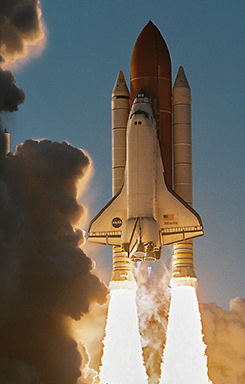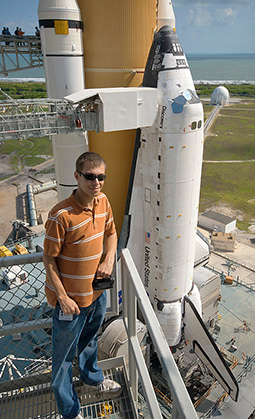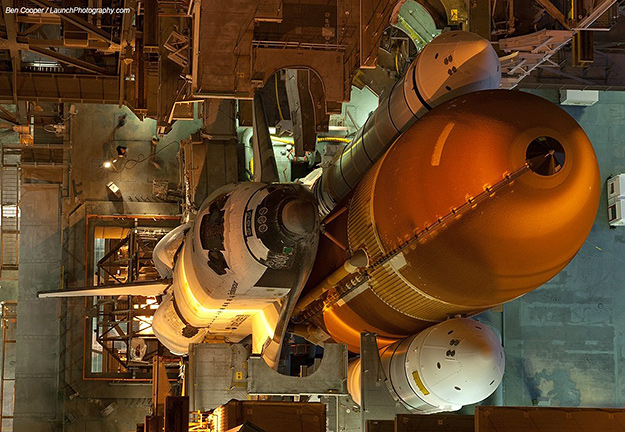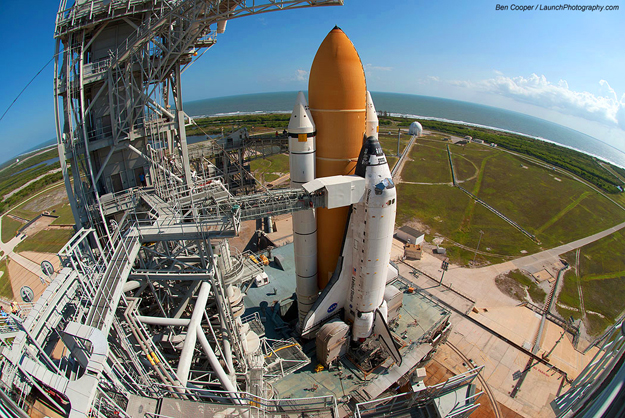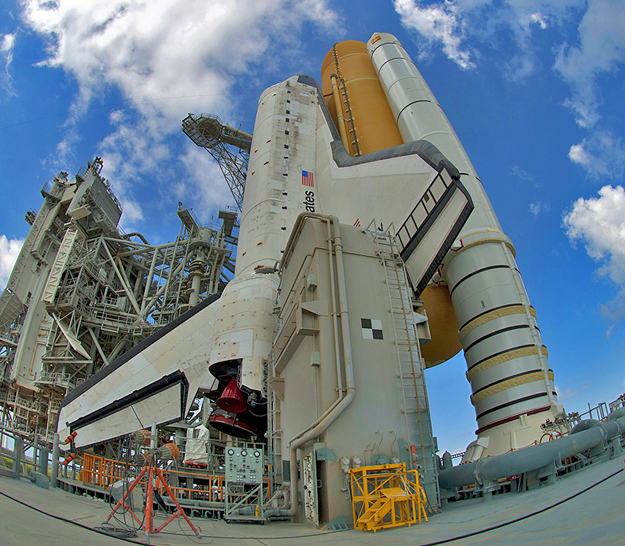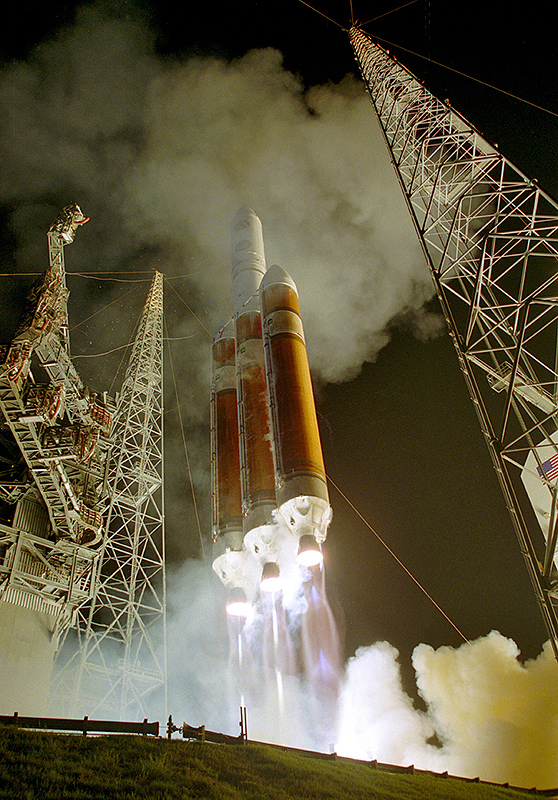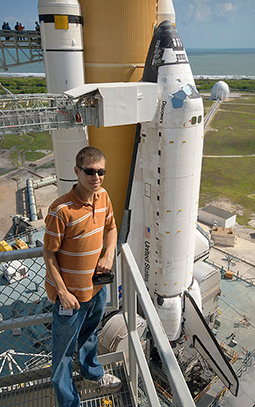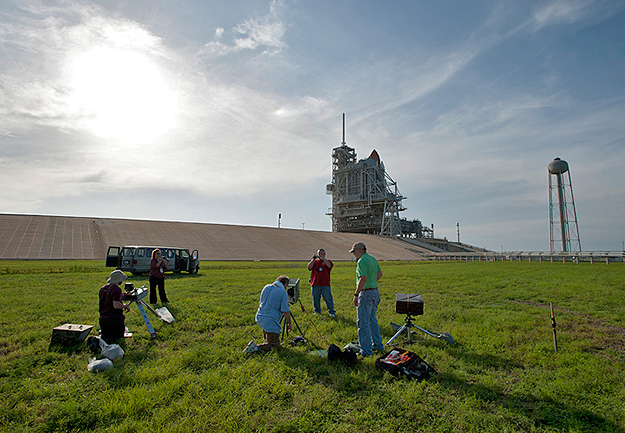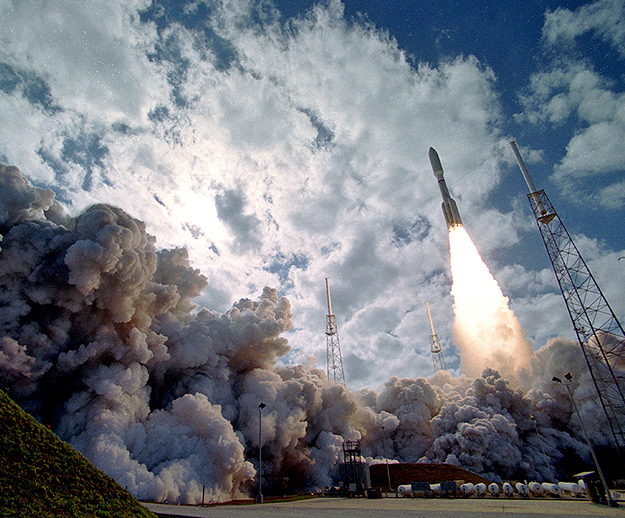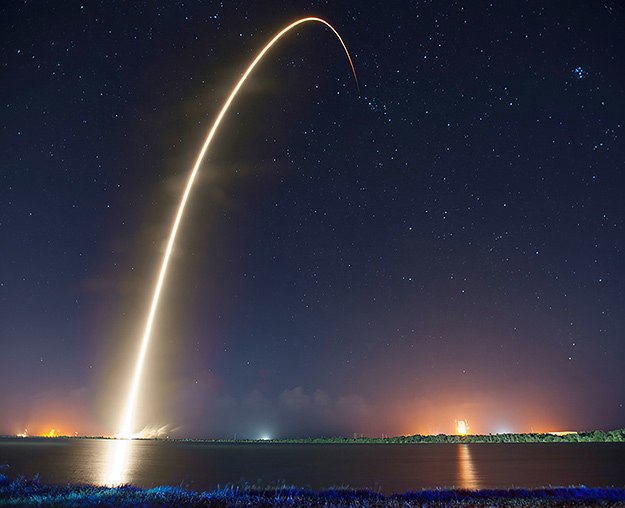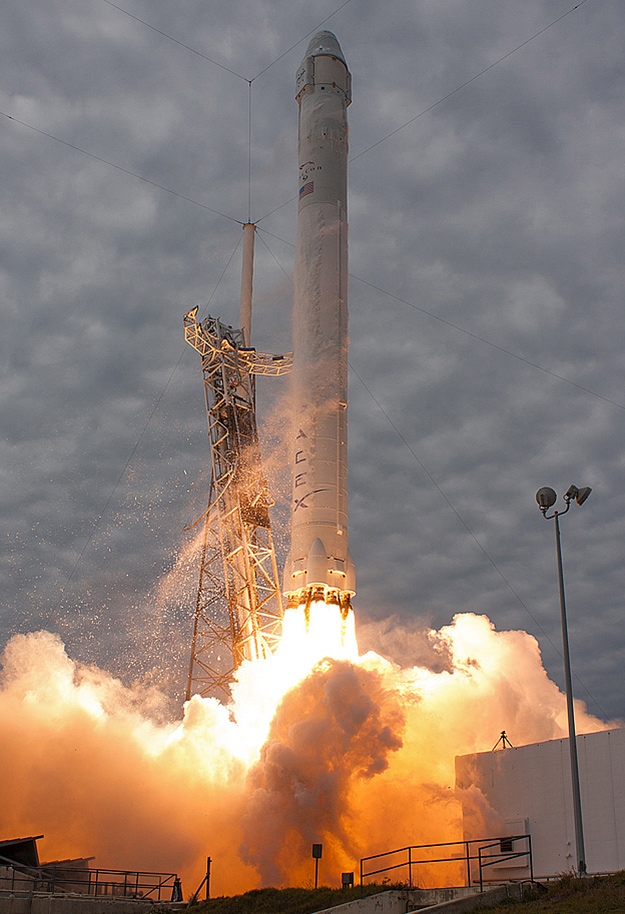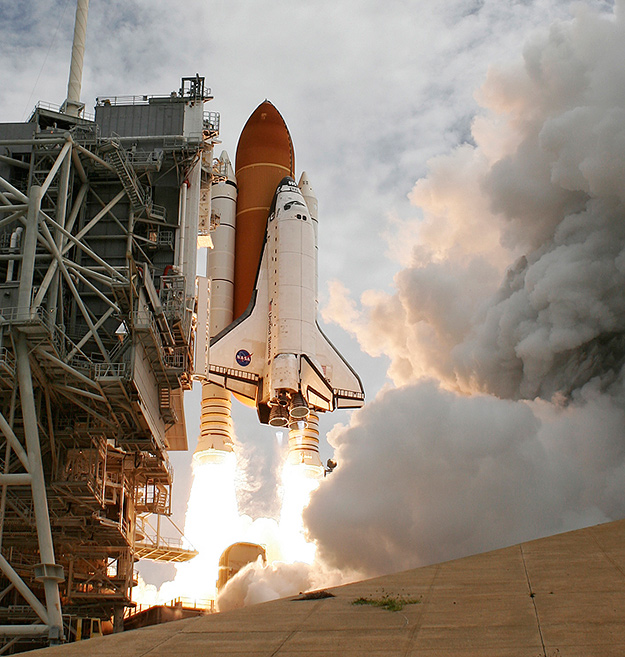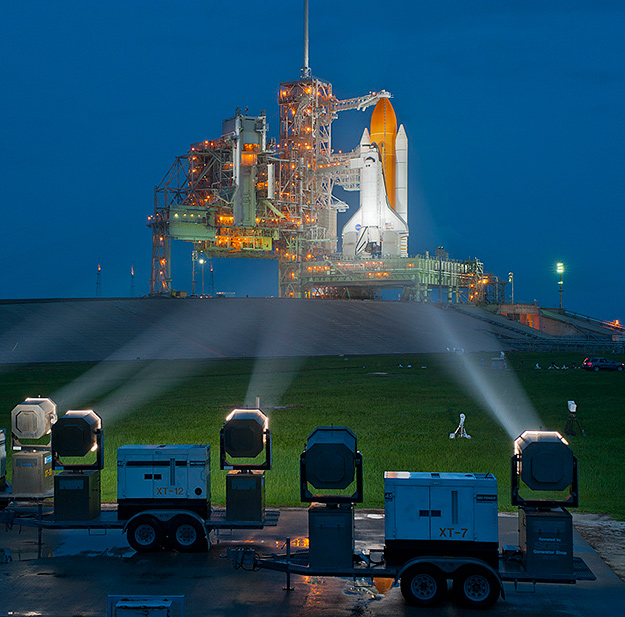Rocket Man: How launch photographer Ben Cooper captures amazing shots of rockets in flight
posted Tuesday, March 31, 2015 at 10:30 PM EDT

I was three when Apollo 11 touched down on the moon, and I grew up watching with great interest the space program ebb and flow with the times. And like most young kids I knew back then, I also became an enthusiast model rocket builder. But until I saw an actual rocket launch from Cape Canaveral about ten years ago during the twilight years of the space shuttle program, I'd never had any real comprehension of the magnitude of the power those launch rockets actually put forth.
Through the years of heading to NASA's Astronomy Picture of the Day every morning over coffee, I've come across a number of inspiring images from modern rocket launch photographer Ben Cooper, and decided to reach out to him and see if he'd share some of his experiences and techniques with our readers. Ben graciously agreed, and you'll likely find many of his answers as interesting as I did ("tripod legs severed by flying road signs?"...Indeed!)
Imaging Resource interview with
launch photographer Ben Cooper
Imaging Resource: What first led you to such a big passion for capturing rocket launches?
Ben Cooper: I've had a passion for photography since I was about eight years old, and a passion for aviation and space since a similar age as well. I think the two naturally collided the first time I wanted to come see a rocket launch with my father in 1999. I've never looked back. I also love the challenge of capturing something you can't have a "take two" on. And every launch is different and presents a new challenge, so the passion continues.
[All images © Ben Cooper / LaunchPhotography.com / To see a larger version
or to get more information please click on any of the images.]
IR: Can you share with us a bit about your career path?
BC: It wasn't until high school that I took a deep interest in the space program, and I saw myself going down a path of engineering and hopefully working for NASA. But my photography stayed with me, and when I chose to go to a good engineering school in Florida (Embry-Riddle), I continued to try and attend every rocket launch and photograph them while completing my degree. By the time I was ready to graduate, I had built a strong resume with aerospace photography and was already photographing for some major aviation news outlets.
I was quickly presented with the opportunity to join the NASA photography team and started that out of college. It lasted three years, until the shuttle program came to an end in 2011. I was able to continue to shoot for other outlets at the same time and eventually gained more attention with my work and got some commercial gigs as well.
IR: What's the most challenging aspect of launch photography?
BC: For launches, aside from having one shot at getting it right each time, the more challenging aspect is the cameras at the launch pad. These are set up ahead of time, as much as two to even three days before, and left alone (as no one is closer than a few miles during launch). They have to be programmed right and protected from weather and from the fury of the launch itself.
Losing equipment is not uncommon, especially the front element of the lens if exposed. It can be pitted by high-speed dirt and sand. If placed close enough the heat from the engines can melt plastic. There is also a risk of fire with each launch; sometimes the grass around the launch pad catches fire. I've had a couple of items burned or melted from that too. Once in a while though, losing equipment is worth what can result in an incredible image.
IR: What's your primary rig, including camera bodies, lenses, special tripods, etc?
BC: I have a suite of equipment, and during my career and sometimes using others' gear (like with NASA) I have had the opportunity to use just about every DSLR there is from low end to the best of the best; Nikon, Canon, Kodak, Minolta etc, as well as film cameras. (I was all film from when I was a kid until about 2005; I last shot a roll personally in December 2007 though used some film at work later on). I have about 20 SLRs right now and have set up as many as about 18 for a single launch to date, but the number is not always that high. The least I would set up now is probably 10 or 12 per mission. I have a lot of tripods and clamps of course to compliment that as well.
IR: Because most IR readers are gear-heads, we need to ask you: Do you have a favorite go-to lens?
BC: I love to go wide and frequently use 10mm or wider for the most dramatic shots, whether it be the timelapse (usually as wide as possible) or a dramatic launch shot taken very close and you need a very wide lens to get it all in. Sometimes for very wide and special aerial-type shots I'll use a fisheye looking down and make it look like the rocket is jumping off a miniature planet.
IR: Just how dangerous is launch photography?
BC: Most people don't realize the size of these rockets and launches and the enormous power generated. Most of the rockets at Cape Canaveral now stand 20-25 stories tall, and NASA is working on a new one that will be the biggest ever eventually.
The power from even the smallest one is enough to kill. The rockets top several million pounds of thrust (a 747 firing all four engines at full thrust is roughly a quarter million; the space shuttle was almost eight million). I've seen cameras thrown a couple hundred feet outward, even when they were staked down properly. I've seen tripod legs severed by flying road signs and rocks flying straight into cameras.
The shuttle once took the bricks in the flame trench and ejected them half a mile out into the water. The cameras set up at the pad are staked down usually, or clamped in place, so they cannot move or be toppled by the launch. But this does not obviously always hold true!
IR: Can you share some about the special techniques you use to capture launches?
BC: Setting the cameras up at the launch pad means they are on their own for liftoff. I primarily use sound to capture the launches, as this essentially never fails (a microphone triggers the camera). I can control when the microphone is activated, as well, so that it is not on all day every day. Only occasionally do I use another method such as a timer or intervaolmeter; I might use that, for example, to get a timelapse leading up to launch as well as liftoff itself.
I set up an average of anywhere from about 10 to 18 cameras per launch, even up to 20 if you count where I am standing at launch time. It's all about getting as many awesome angles as we can each time!
I normally have a preset setting, in manual exposure, for daytime or nighttime.. But this can vary depending on the rocket and the launch pad as they are each a little different and the light output is different. Sometimes I'll use aperture priority for special situations, such as to capture a sunset or twilight launch.
The long exposures (the timelapses, also known as "streak" shots)...to get a full arc from launch all the way until the rocket is heading well downrange are several minutes long. 2-4 minutes is typical. If I want a shorter streak it could be less. You can also go a little longer, sometimes at night if it is clear we can see the rocket when it is a few hundred miles away still, several minutes into flight.
IR: What about your current gear would you like to see improved in future camera or lens models?
BC: I think they are almost as good as they can get at this point. The launches never require me to use high ISO so noise is not much of a concern, but I have been glad to see improvements with that every couple of years for other photography I do. The built-in timers are a nice addition. Built-in sound triggers maybe?
IR: Is there anything special you can share about the best way to scout out locations for capturing launches?
BC: Locations are limited to where there is a place to set up, at the launch pad or near it. The Florida pads are surrounded by swamps and thick brush. Viewing sites are also limited by rules and safety concerns. But there is no shortage of spots to set up cameras. The biggest challenge is finding very new and different angles each time for the same launch pad. I have done a lot of launches (136 and counting over 15 years) and know virtually all the great spots at this point. I try to shake things up as best I can each time, but it is a challenge to really shock every single time....when I do, though, it goes over big!
IR: What was it like being an official NASA photographer and were there any special challenges that came with the job?
BC: I worked with the NASA photo team for three years; the final three years of the space shuttle program. There were about 12 or 15 others that I worked with, some of which have been there for 20-30 years and had been a part of so much history and made the shots you see in textbooks and on posters. It was a privilege and a thrill to get to work in the shuttle program before it was too late. That was one of my goals for many years, and I am proud to have accomplished that. I think my biggest challenge when I started was learning to deal with people shoots and lighting. I shot a lot of award presentations, for example, something I had not done prior to that.
IR: What's the most special event you've ever covered?
BC: That's a tough question. The last launch of the shuttle was big, also sad (or bittersweet as we liked to say). The return to flight of the shuttle after the Columbia accident in 2003 was also big. The total solar eclipses I have traveled to see were special as well.
IR: Has anything changed significantly for your craft after the retirement of the space shuttle program?
BC: Not really. The launch rate in the US is poised to go back up now that there are a couple of newer companies building rockets. Back in the 1990s there were as many as 20 launches a year from Cape Canaveral. But by the mid 2000s it was down to as little as seven one year. We had 16 in 2014, and already six so far this year. The pace is picking up, the more the better.
A big, IR Thank You to Ben Cooper for sharing his experiences with us, and for the inspiring launch shots we get to live vicariously through! You can see much more of Ben's work on his website LaunchPhotography.com.
• • •
Similar articles you might enjoy:
Astronomical beauty: How one photographer
pulls heaven down to earth for the rest of us to see
The Art of Capturing Aurora: An interview with photographer Jeremy Gray
